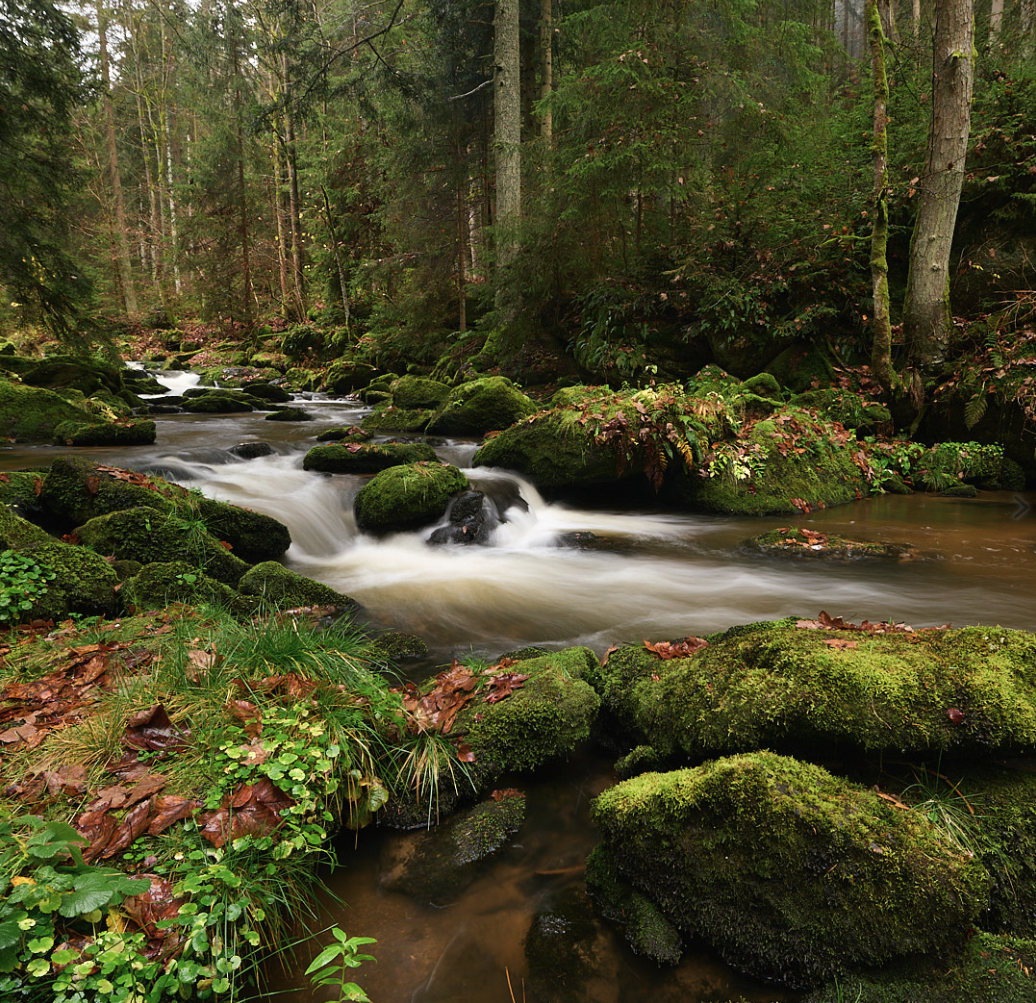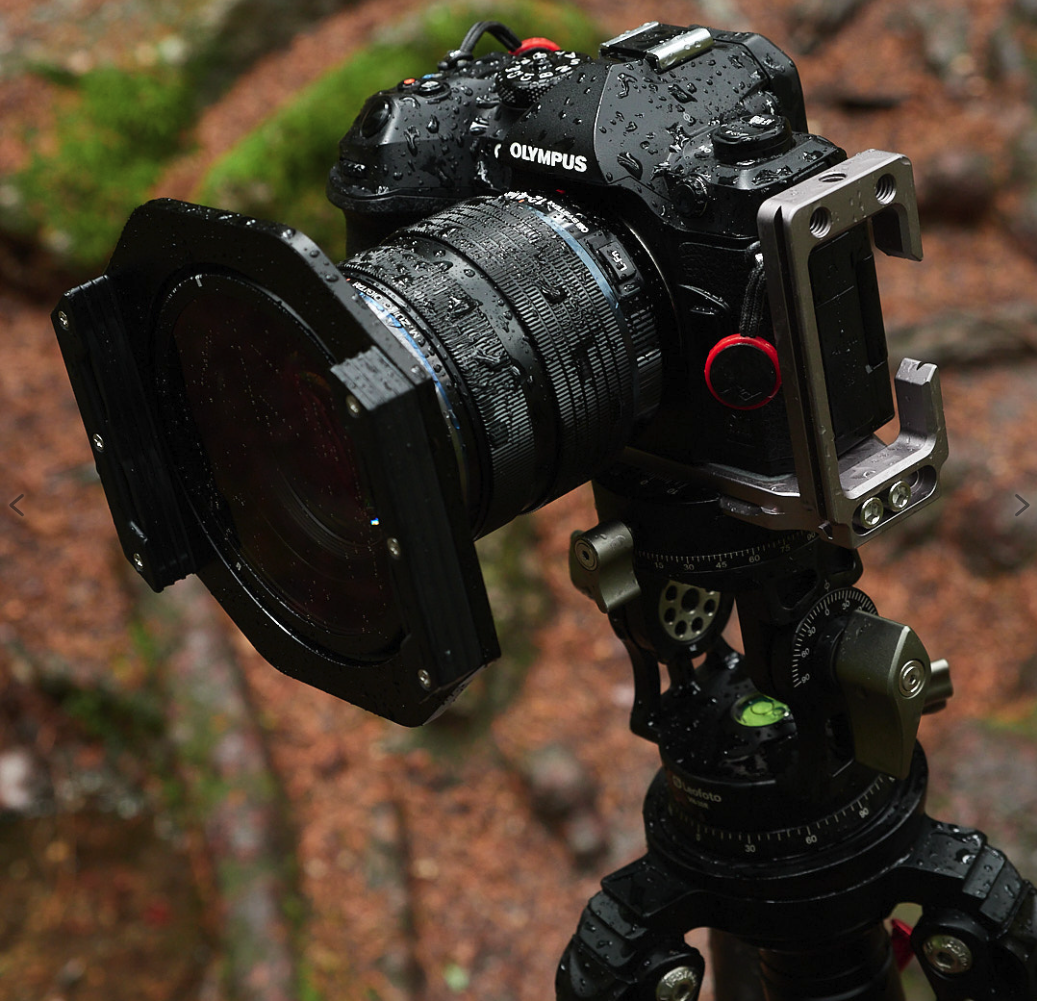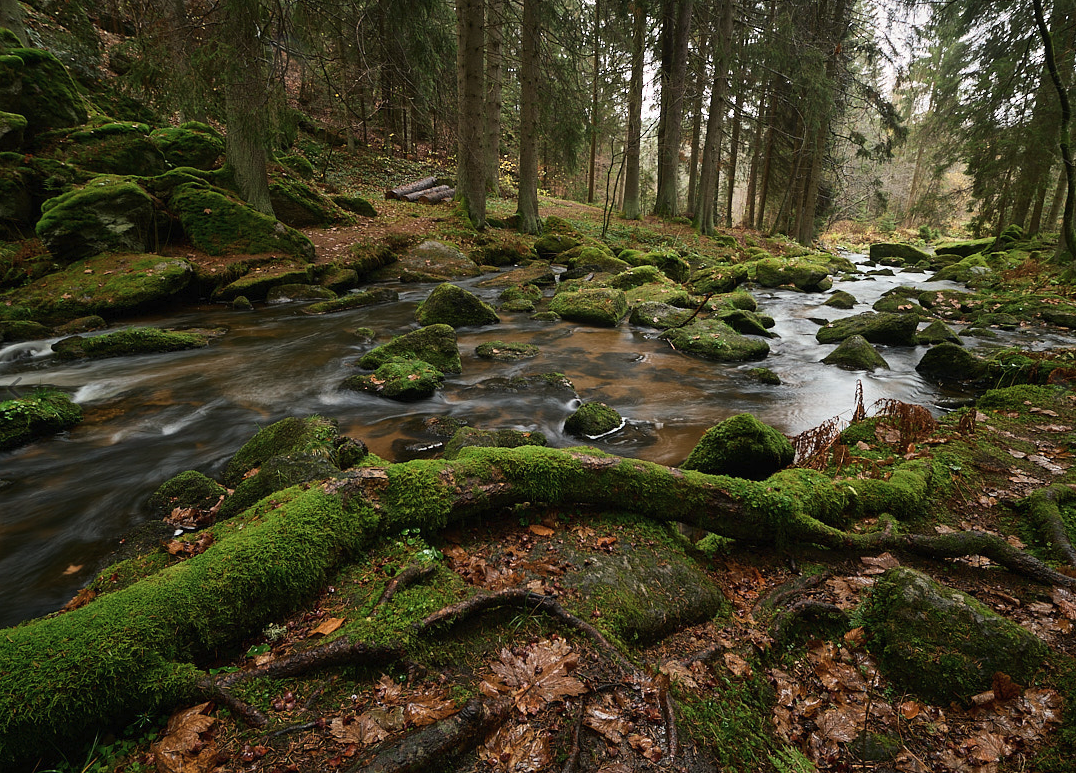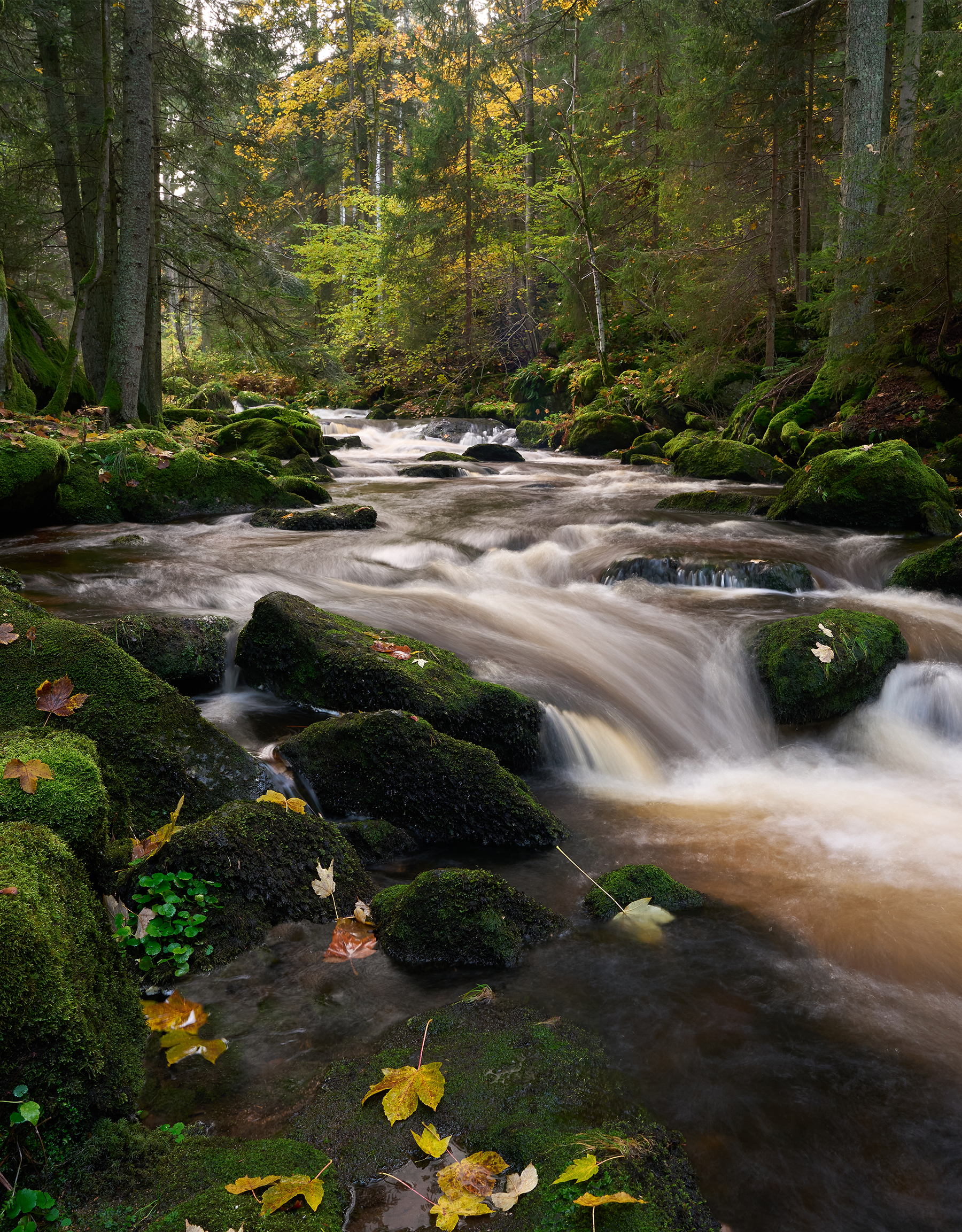Long Exposure Photography on the Bärentrail - A Workshop Review
by Karl Grabherr
On November 4, 2022, a small group of photography enthusiasts made their way to Arbesbach in the Waldviertel region to dedicate themselves to long-term photography on the Bärentrail as part of a workshop.
Despite the wet and cold weather, motivation was high. Equipped with warm, waterproof clothing and weatherproof cameras, we set off to photograph the impressive Lohnbachfall and Höllfall waterfalls.

The weather turned out to be ideal for long exposures: The rain provided saturated colors, intense moss green and reflections on the rocks that enhanced the textures. Our NiSi products (NiSi filter system and NiSi ND filter) proved to be excellent against water droplets. Drops could be easily removed with a Rocket Blower and thanks to the nano-coating of the filters, no residue was left behind. This allowed us to concentrate fully on the image composition and experiment with different exposure times.
The cameras from OM SYSTEM | OLYMPUS offered us many possibilities. In addition to classic filters, we also used the Live ND function of the cameras, which simulates ND filters internally (up to ND64 on the OM-1). In some cases, this even made it possible to take long exposures handheld, as the image stabilizer was able to cope with longer exposure times without any problems.
Another highlight was the HighRes function of the cameras. This combines several shots with a slightly offset sensor to create a high-resolution image, which effectively results in longer exposure times - ideal for moving water. Alternatively, the LiveTime function was used, which allows the exposure to be tracked on the display and stopped at optimum brightness. This enables intuitive working without complex calculations or apps.

Water on equipment and filters was not a problem. A quick wipe before stowing away was enough. At home, we cleaned the equipment thoroughly and left it to dry. The rucksack, which had become damp from the rain, dried in the air after three days. Despite the moisture, the equipment remained safe.
During the workshop I had my first opportunity to test the NiSi 9mm F2.8 lens for APS-C and MFT cameras. My focus was on both the optical performance and the resistance to splash water. The lens impressed with its excellent workmanship with a robust metal housing and a matching metal lens hood. The image quality was impressive - even at open aperture (F2.8), the lens delivered sharp results right into the corners. There was no noticeable vignetting or chromatic aberration. Even without lens corrections in the RAW converter, the lens hardly showed any distortion and the corners remained free of distortion, as is often the case with many other super wide-angle lenses.
Although the lens does not have autofocus, this proved to be unproblematic with this focal length. Particularly noteworthy are the ten aperture blades, which make it possible to transform point light sources into impressive stars when shooting at night - an effect that can already be achieved at open aperture. Even though I was unable to test this during the workshop, I will go into more detail about this lens in a future test report with pictures.
After a long day outdoors, we rounded off the workshop with a cozy meal at the inn in Arbesbach. It was a fulfilling and inspiring day and we are already looking forward to the next tour to the Bärentrail - perhaps in the deep snow of winter.


